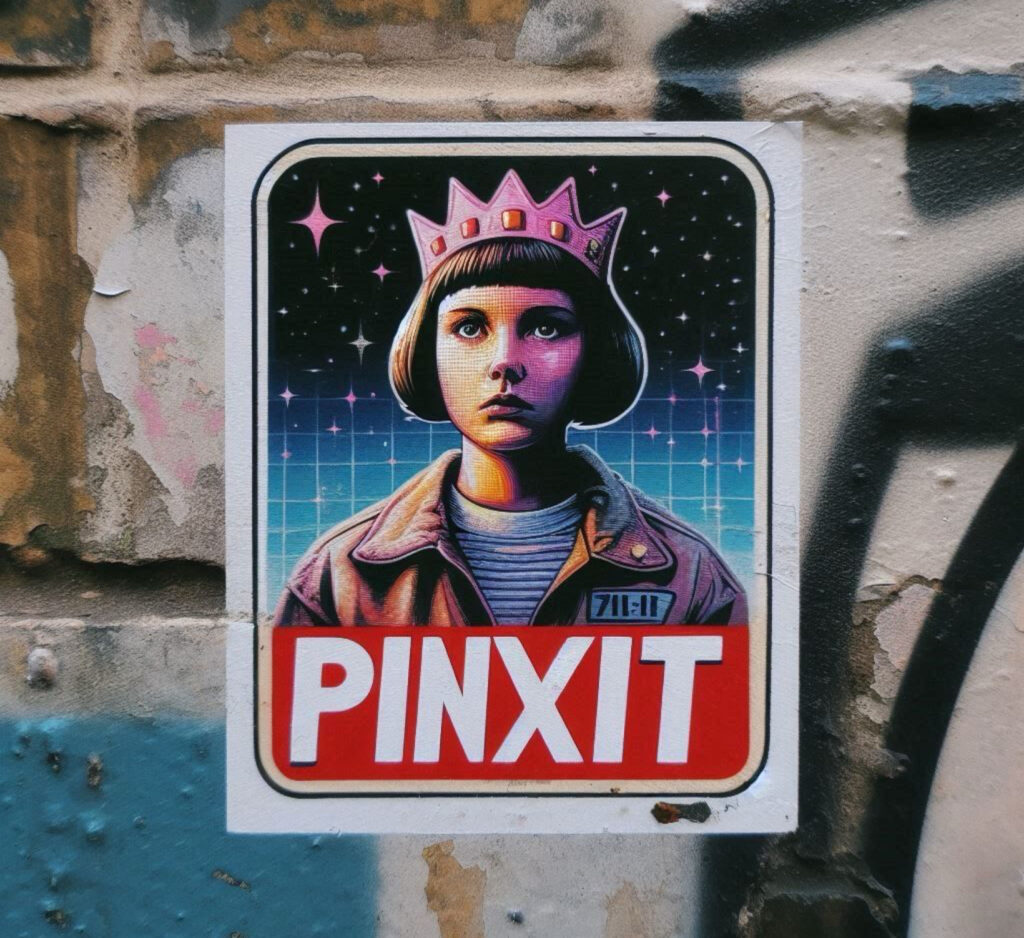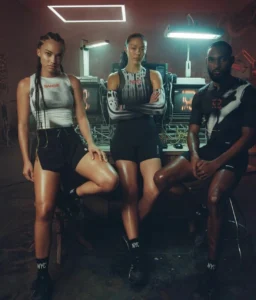The term “Pinxit” originates from Latin, meaning “he/she painted it.” Historically, artists used this signature to claim authorship of their work, particularly during the Renaissance. Over time, “Pinxit” has transcended its classical origins to become a symbol of artistic expression, branding, and cultural commentary. Today, we see its influence across various fields, from street art and fashion to digital marketing and photography.
The image attached, featuring a striking piece of street art with the bold “Pinxit” label, offers an opportunity to explore the modern significance of the term. This artwork represents more than just a visual statement—it embodies a fusion of art, identity, and contemporary storytelling.
This article examines three major domains where “Pinxit” has been redefined:
Street Art and Urban Expression
The Fashion Industry and Branding
Art Collectibles and Pop Culture
Through these lenses, we explore how Pinxit has evolved from an artist’s signature to a larger movement influencing creative industries worldwide. in Street Art: A Symbol of Identity and Urban Rebellion
The Role of Pinxit in Street Art Culture
Street art has long served as a medium for rebellion, commentary, and visual storytelling. Unlike traditional art, which is displayed in museums and galleries, street art is raw, public, and accessible to everyone.
In this context, “Pinxit” has become more than just a Latin signature—it has been reclaimed as a mark of artistic identity in street art and graffiti movements. Artists often use tags, stencils, and stickers to brand their work, much like Renaissance painters once used “Pinxit” to authenticate their creations.
Analysis of the Attached Image
The attached image showcases a retro-futuristic portrait of a woman with a digital-style background, adorned with a crown-like headpiece. This piece exudes elements of surrealism, sci-fi aesthetics, and pop culture references. The bold “Pinxit” label at the bottom suggests one of the following possibilities:
• It serves as an artist’s signature, paying homage to the historical use of Pinxit.
• It functions as part of a street art campaign, possibly tied to an artist collective or movement.
• It reflects a fusion of classic artistic conventions with modern digital/street art techniques.
The artwork is also reminiscent of sticker bombing culture, where street artists distribute highly stylized images as stickers, posters, or wheat-paste artworks in urban environments. This makes it a transient but powerful form of expression, reinforcing the idea that modern Pinxit is a visual identity rather than just a historical term.
The Significance of “711-17”
One of the most intriguing elements of the image is the number “711-17” on the figure’s uniform.
• It could be an artistic code or Easter egg, referencing an important date, event, or artist signature.
• It might relate to a dystopian theme, where numbers replace names, drawing from cyberpunk aesthetics.
• It may be tied to a specific collection, artwork series, or hidden message within the artist’s portfolio.
The context in which this image was found could provide further insights into its meaning. Is it part of a larger street art installation, or does it exist as an isolated piece in an urban landscape?
Pinxit in Fashion: Blurring the Lines Between Art and Apparel
Pinxit as a Fashion Label and Artistic Movement
The fashion industry has embraced street art aesthetics, leading to collaborations that bridge high fashion with underground creative movements. One notable example is the Paris-based brand PINXIT, which specializes in elegant women’s fashion.
While the Pinxit brand is distinct from the street art movement, both share an emphasis on individuality, artistic craftsmanship, and cultural storytelling. Brands that incorporate street art motifs, bold typography, and iconography often reflect an awareness of how urban creativity influences mainstream fashion trends.
Streetwear x High Art: The STREET-[SM]ART Connection
The M O N O✖️I D’s STREET-[SM]ART collection in collaboration with Pinxit is an example of how fashion is integrating urban art aesthetics into wearable design. The attached Pinxit artwork could be part of a similar cultural crossover, where street art transitions into graphic T-shirts, statement jackets, and limited-edition sneakers.
The Role of Branding and Visual Identity
Why would “Pinxit” appear in such a bold, graphic style?
• It may be a designer’s signature, much like how street artists sign their murals.
• It could be part of a branding initiative, using an iconic design for merchandise.
• It serves as a crossover between art and wearable fashion, aligning with modern trends.
Streetwear brands like Supreme, Off-White, and BAPE have successfully leveraged street art’s raw energy to create exclusive collections. If Pinxit follows this model, it would place art at the center of its brand identity, making each piece more than just fashion—it becomes a wearable story.
Pinxit in Pop Art and Collectible Prints
The Influence of Pinxit in Art Books and Collectibles
One of the most famous contemporary uses of “Pinxit” is in the art book “Mark Ryden: Pinxit”, which showcases the surreal, hyper-stylized works of Mark Ryden, a leading figure in pop surrealism.
Ryden’s work shares similarities with the Pinxit street art image, including:
• Hyper-detailed, almost dreamlike figures
• A mix of classic and futuristic influences
• A storytelling approach that blends nostalgia with modern themes
This suggests that “Pinxit” is becoming a recognizable marker of modern pop art, particularly among collectors of limited-edition prints, street art photography, and high-end gallery pieces.
Limited Editions and High-Value Artistic Branding
With the rise of NFTs and digital art markets, Pinxit-branded works could be part of a growing movement of collectible urban art.
• Street artists are turning their works into NFT drops, ensuring authenticity and value.
• Limited-edition prints of urban artworks are becoming investment pieces.
• Art-tech collaborations allow for a fusion of street, digital, and fine art disciplines.
The Pinxit artwork in the image may exist both in physical and digital formats, positioning it at the crossroads of physical street art and digital cultural movements.
Impression
The attached Pinxit street art piece exemplifies how a term with Renaissance roots has evolved into a modern, multi-dimensional cultural phenomenon. Whether in street art, fashion, or collectible prints, Pinxit represents:
visual signature of contemporary artists
branding tool that merges street culture with high fashion
culture bridge between classic artistry and digital-age storytelling
As the term continues to gain relevance, it’s likely that we will see more flow with artist collectives, and branded movements incorporating “Pinxit” as a symbol of creative authorship and artistic rebellion.
• If the attached Pinxit artwork is part of a larger collection, it may be worth tracking down the artist for more context.
• If this is a branding effort, its presence in street environments suggests a strong, grassroots marketing strategy.
• If this is a one-off urban intervention, it speaks to the growing influence of artist-driven narratives in mainstream fashion and art spaces.
No matter the origin, Pinxit today stands as an emblem of self-expression, creative identity, and artistic evolution—a legacy that began in the Renaissance and now thrives on the streets of the modern world.
No comments yet.







